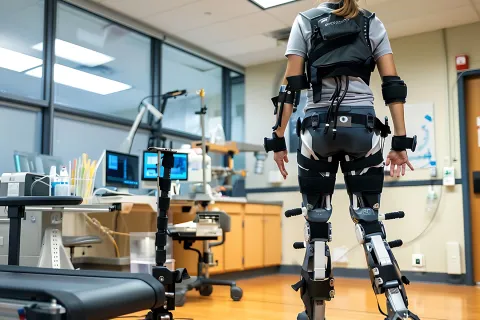
With the evolution of technology, the healthcare industry has become keen on integrating software with medical devices to incorporate automation and accuracy in the prediction, diagnosis, prevention, treatment, and management of health conditions. The US FDA had long recognized the role software can play to benefit the functioning of medical devices but was yet to come up with any concrete guidance or rules that could have facilitated the industry researchers in making advancements towards digital health.
On November 4, 2021, the US FDA released a draft guidance on ‘content of premarket submissions for device software functions,’ giving a firm idea to sponsors responsible for preparing the document and what information to include. This information provided by the sponsors is important for the FDA to evaluate the device software executing one or more functions and to ensure safety and effectiveness throughout its lifecycle. The new guidance is a recommendation and a draft version about medical device software functions which the FDA has committed to publishing as a replacement to the 15-year-old guidance document ‘Guidance for the content of pre-market submission for the software contained in Medical device’ released in May 2005. They have kept the window for feedback, and any discussions on the same are open till February 2, 2022.
In this new version, the FDA recognized the mode of association of software with a medical device and further differentiated them into SaMD - Software as a medical device and SiMD - Software in a Medical Device, as subdivisions of device software functions. Software as a medical device or SaMD is a software that itself carries out a medical device’s task as per the definition of the medical device mentioned in Section 201 (h) of the FD&C Act but is not a part of a constituent of the device. On the other hand, software in SiMD, as the name suggests, comes as a part of the medical device component or hardware used to record, control or display medical or non-medical information.
The draft focuses more on the expectations of the FDA regarding document preparation required for pre-market submissions of device software functions. They came up with a clear understanding of what they expect to see in the documents that robustly establish the Software Requirements Specification (SRS) and software or System Design Specifications (SDS). The FDA emphasizes a risk-based approach while documenting for the pre-market submissions of device software functions. Based on this level of concern or the risk associated with the device’s intended use, the level of documentation is also supposed to vary as basic and enhanced documentation. The key points that each level of documentation requires to highlight to identify the level of concern of the software associated with the medical device are:
- The software overview giving an idea of the inputs and the outputs
- Software Requirement Specifications (SRS), which includes details of the software architecture with a schematic diagram of all modules, peripherals, programming languages, operating system, compiler version, use of any of the shell software, and any UI/UX details
- Software or System Design Specifications (SDS) covering information of the software right from the design stage is required for sponsors submitting enhanced documentation. While SRS describes the intended function of the software, SDS is in-depth information on the implementation methodology of the requirements mentioned in SRS. SDS must include a comprehensive technical design detail with adequate information on the utility, functioning that traces to the SRS, whether assistance is required to operate the software or it’s a trained CAD system built on AI/ML models
- Adherence to the industry-recognized voluntary consensus standards for Regulatory submissions would become easy and more in tune with the current digital health market trends, practices, and innovations according to this new draft guideline. Devices requiring basic and enhanced documentation both need to comply with the FDA-recognized version of ANSI/AAMI IEC 62304 Medical device software- Software lifecycle process. Enhanced documents require an additional description of the complete configuration with even greater details on the design development and maintenance plan in the software lifecycle for better clarity while reviewing
- Based on the risk analysis as per the requirements of Quality System Regulations (21 CFR 820), safety-related information like the operating environment, efficacy, accuracy, response time, delay time, consistency, operating limits & range, and any base or threshold value which the software requires to operate on should also be included. Provision of any vigilance system to track the data recorded using device memory or storage system must be mentioned
- As part of the software lifecycle, software verification and validation are essential, achieved by testing software constituents at the system or integration level. This is mandatory for enhanced documentation. Besides, the description of the test protocols along with the expected or observed results to establish the pass/fail status of the system should also be discussed
- Any involvement of unresolved anomalies like bugs, defects that can affect the performance of the software function should be identified and classified based on the defect taxonomy as per ANSI/AAMI SW91’s Classification of defects in health software
Enhanced documentation is required to be submitted for devices that are either a combination product or classified as a Class III high-risk device or a software function intended to be used in blood donation and blood transfusion applications that conducts the compatibility assessment of donor and recipient. Devices that require special documentation should follow the enhanced documentation requirements. Basic documentation should brief hazard analysis, hazard mitigation, and risk justification reports.
As per the MDUFA IV commitments, the Agency is supposed to publish the final guidance within 12 months towards the end of the draft comment period. The FDA has declared to host a webinar on December 16, 2021, for medical device manufacturers, digital health industry researchers, and professionals to discuss this draft guidance.
To know more about premarket submission of device software functions, reach out to regional Regulatory expert like Freyr. Stay informed. Stay compliant.









